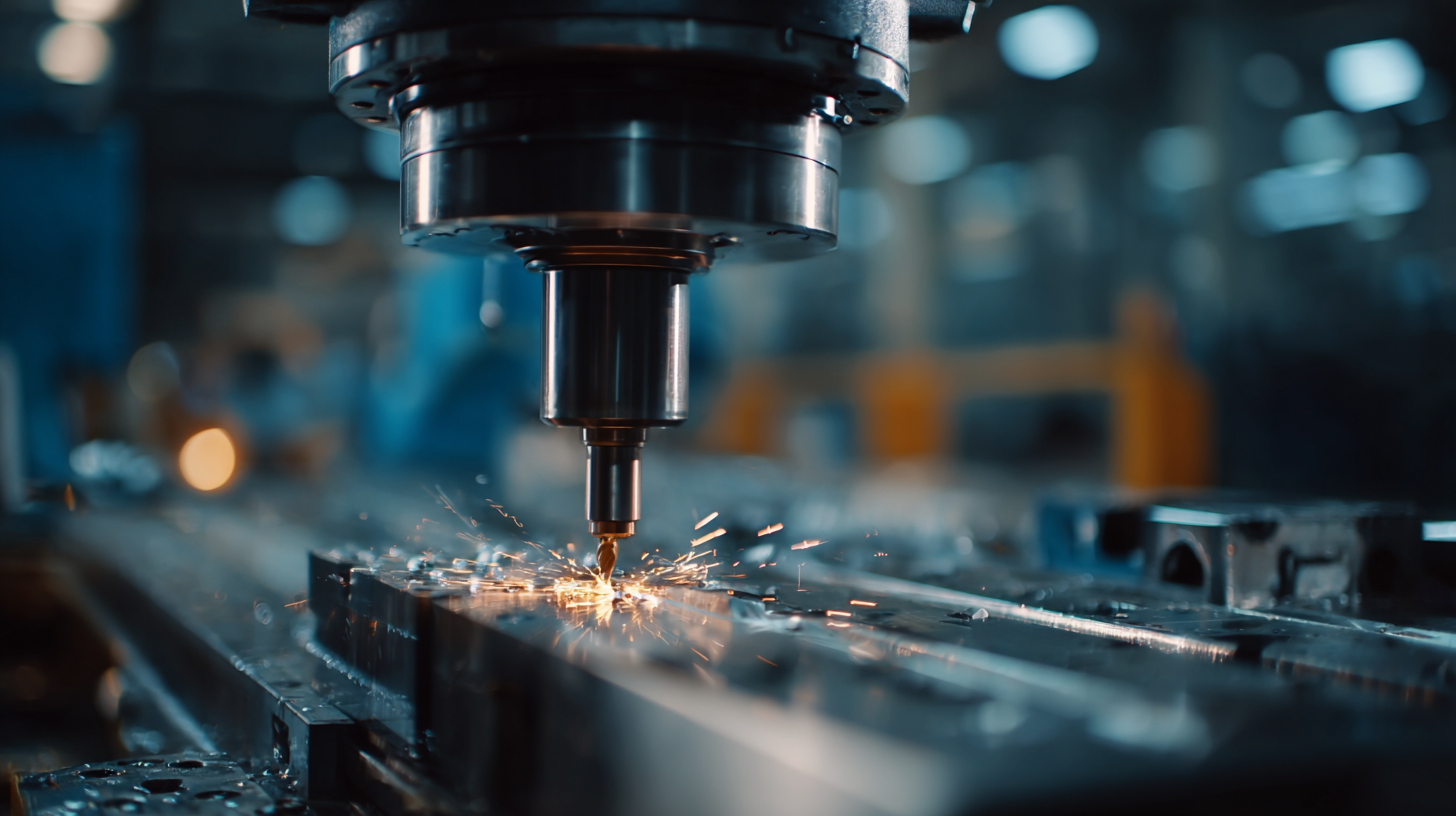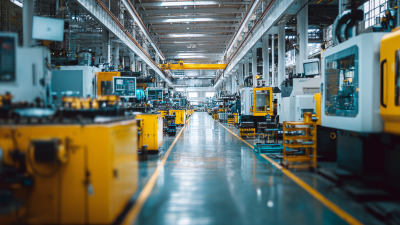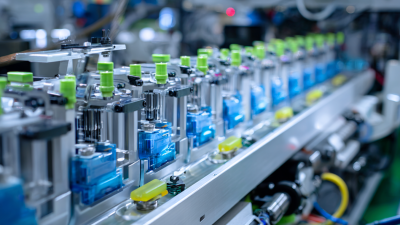Revolutionizing Industry: The Impact of Advanced Mold Manufacturing Techniques in 2023
In 2023, the landscape of mold manufacturing is undergoing a transformative revolution, driven by advanced techniques that optimize efficiency, precision, and sustainability. As industries increasingly seek innovative solutions to enhance production capabilities, the incorporation of digital technologies, automation, and advanced materials is reshaping traditional mold making practices. This article delves into the latest trends and techniques in mold manufacturing, offering insights and practical tips for industry professionals looking to stay ahead in a competitive market. By exploring these state-of-the-art advancements, readers will gain a comprehensive understanding of how to leverage these technologies to improve their operations, reduce costs, and elevate product quality. Join us as we navigate through this exciting shift in mold manufacturing that is set to define the future of industrial production.

The Evolution of Advanced Mold Manufacturing Techniques in 2023
The landscape of advanced mold manufacturing has undergone significant transformation in 2023, driven by technological innovations and a heightened demand for precision and efficiency. According to a report by MarketsandMarkets, the global advanced mold market is anticipated to reach $15 billion by the end of this year, showcasing a CAGR of 8% from 2020. This growth is fueled by increasing automation and the adoption of advanced materials that enhance mold durability and lifecycle.

Manufacturers are now heavily investing in additive manufacturing technologies, such as 3D printing, which allow for the rapid prototyping of molds. This shift not only reduces lead times but also enables more complex designs that were previously challenging to achieve with traditional methods. A study by Deloitte has found that companies utilizing these techniques report a 30% increase in production efficiency and a significant reduction in material waste. The focus on sustainable practices within the industry further underscores the crucial role that advanced mold technologies will play as manufacturers strive to meet both market demands and environmental standards.
Leveraging Automation: Enhancing Efficiency in Mold Production Processes
In 2023, the mold manufacturing industry has seen significant advancements owing to the integration of automation technologies. According to a report by MarketsandMarkets, the global automation market in manufacturing is expected to grow from $183 billion in 2021 to $395 billion by 2026, indicating a robust shift towards automated processes in production environments. Automation not only enhances speed but also ensures precision, which is crucial in mold making where tolerances are often within microns. As a result, manufacturers are increasingly adopting robotic arms and AI-driven machines, leading to a 30% reduction in labor costs while improving output quality.
Furthermore, automated mold production processes have introduced smart technology that allows for real-time monitoring and diagnostics. A survey conducted by Deloitte revealed that companies implementing such technologies saw a 20% improvement in production efficiency. This shift to automation has proven essential in meeting the rising demand for complex molds in various industries, including automotive and consumer goods. The ability to rapidly produce high-quality molds with minimal human intervention not only accelerates time-to-market but also enhances competitive advantage in an ever-evolving marketplace.
Sustainable Practices: Reducing Waste with Advanced Mold Technologies
In 2023, advanced mold manufacturing techniques are becoming increasingly essential in promoting sustainable practices within the industry. Traditional molding processes often generate significant waste due to inefficiencies and the use of non-renewable materials. However, with the introduction of smart technologies and automated systems, manufacturers can optimize their operations, ensuring that every material is utilized effectively. Innovative designs, such as those employing 3D printing and precision molding, drastically reduce scrap and enhance resource management.
Moreover, sustainable mold technologies are now integrating eco-friendly materials and methods, transforming the lifecycle of products. For instance, bio-based polymers and recycled materials are gaining traction, enabling manufacturers to create molds that not only meet performance standards but also contribute to a circular economy. By embracing these advanced techniques, industries are not only decreasing their environmental footprint but also setting new benchmarks for corporate responsibility, thus paving the way for a more sustainable future.
Revolutionizing Industry: The Impact of Advanced Mold Manufacturing Techniques in 2023 - Sustainable Practices: Reducing Waste with Advanced Mold Technologies
| Technique | Description | Waste Reduction % | Carbon Footprint Reduction (Kg CO2) | Adoption Rate (%) |
|---|---|---|---|---|
| 3D Printing | Utilizes additive manufacturing to create molds layer by layer. | 40% | 200 | 30% |
| Digital Twin Technology | Creates virtual models of molds to optimize production processes. | 25% | 150 | 20% |
| Biodegradable Materials | Use of sustainable materials that break down naturally. | 35% | 180 | 15% |
| Energy-Efficient Machining | Techniques focusing on optimizing energy usage during machining. | 30% | 250 | 25% |
| Lean Manufacturing Principles | Focus on minimizing waste and maximizing productivity. | 45% | 300 | 35% |
Case Studies: Successful Implementation of 3D Printing in Mold Manufacturing
The advancement of 3D printing technology has significantly transformed mold manufacturing in 2023, with numerous case studies showcasing its successful implementation. A report by Wohlers Associates indicates that the global 3D printing market reached approximately $15.3 billion in 2023, underscoring the increasing adoption of additive manufacturing techniques across various industries. Companies like General Motors and Adidas have effectively utilized 3D printing for mold production, reducing lead times and costs while enhancing design flexibility.

For instance, General Motors implemented 3D printing to create intricate molds for its vehicle components, reportedly decreasing production time by 75% compared to traditional methods. Similarly, Adidas utilized 3D-printed molds to manufacture the Futurecraft 4D sneaker, demonstrating how rapid prototyping can lead to innovative product designs. The ability to rapidly iterate design prototypes using 3D printing allows manufacturers to respond quickly to market demands, which is critical in today’s fast-paced business environment. These case studies exemplify how advanced mold manufacturing techniques are revolutionizing production processes, enabling companies to stay competitive in a rapidly evolving landscape.
The Role of AI in Predictive Maintenance for Mold Production Equipment
The integration of Artificial Intelligence (AI) in predictive maintenance is transforming the landscape of mold production equipment. According to a recent report by Gartner, organizations that implement AI-driven predictive maintenance can reduce equipment downtime by up to 30%. This significant reduction translates into increased efficiency and a remarkable decrease in operational costs. Advanced algorithms analyze vast amounts of data from production lines, enabling manufacturers to predict equipment failures before they occur, thereby optimizing maintenance schedules and ensuring a continuous production flow.
Moreover, the adoption of AI tools is not just about avoiding failure; it enhances the overall quality and precision of mold manufacturing. A study by McKinsey highlights that leveraging AI in manufacturing can boost productivity by as much as 20%. With AI systems monitoring machine performance in real-time, manufacturers gain insights into wear and tear patterns, allowing for timely interventions. This predictive approach minimizes material waste and significantly improves product quality, aligning with the industry’s growing emphasis on sustainable practices. As 2023 unfolds, the role of AI in predictive maintenance is poised to be a critical driver of innovation and efficiency in the mold manufacturing sector.
Impact of AI-Powered Predictive Maintenance on Mold Production in 2023
This chart illustrates the predicted and actual maintenance interventions in mold production across 2023, highlighting the significant role of AI in optimizing maintenance strategies.
Related Posts
-

How to Optimize Your Mold Manufacturing Process for Maximum Efficiency
-

What is the Impact of Medical Injection Molding on Healthcare Innovation and Patient Outcomes
-

Solutions for Advanced Automotive Injection Molding Techniques
-

Essential Checklist for Effective Mold Design in Injection Molding Processes
-

How to Choose the Best US Injection Molding Solutions for Your Manufacturing Needs
-

Unlocking Efficiency: How Precision Plastic Injection Molded Parts Boost Production by 30% in Manufacturing

